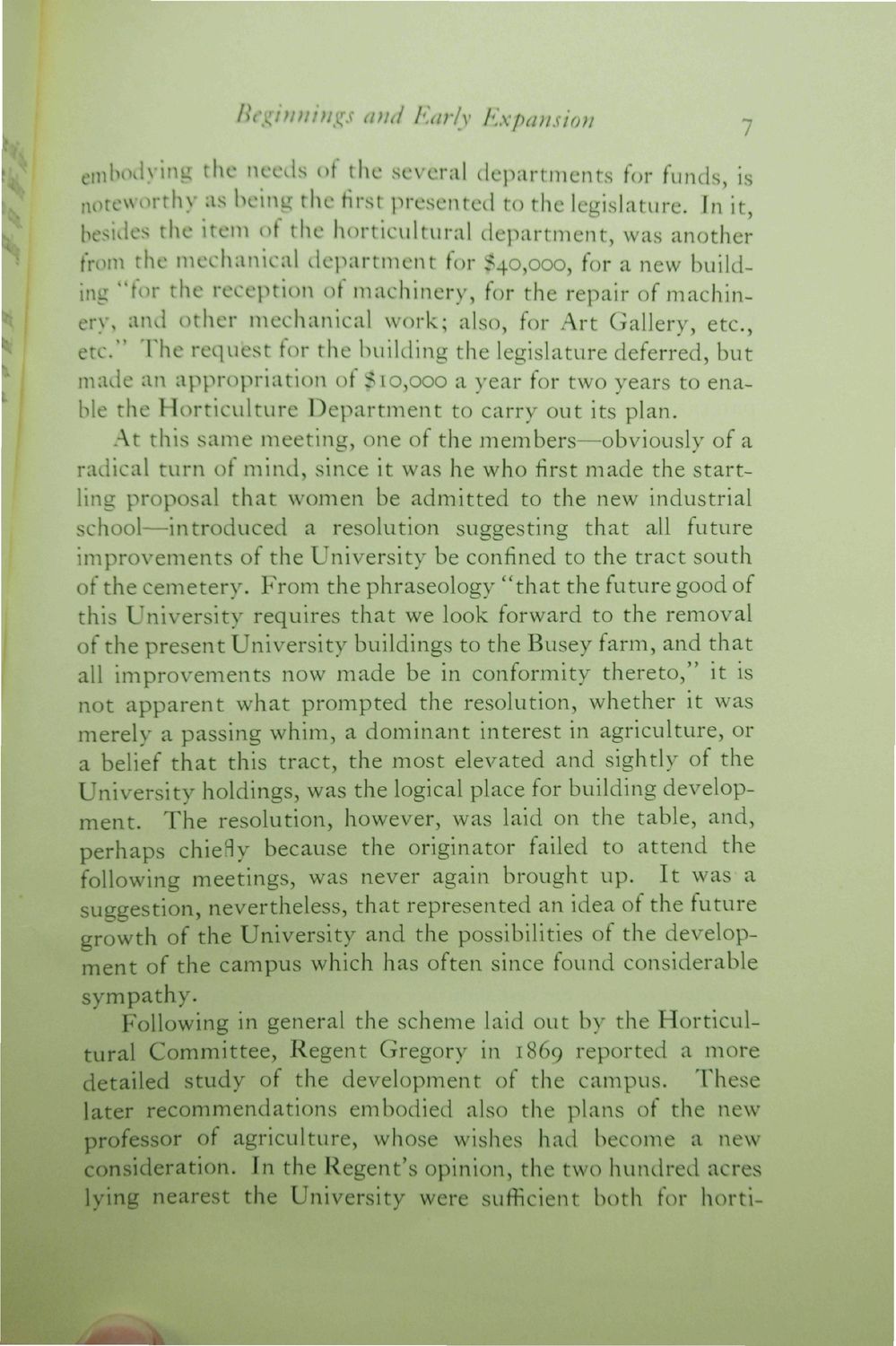| |
| |
Caption: Book - 30 Year Master Plan (Tilton & O'Donnell)
This is a reduced-resolution page image for fast online browsing.

EXTRACTED TEXT FROM PAGE:
Beginnings and Early Expansion 7 embodying the needs of the several departments for funds, is noteworthy as being the first presented to the legislature. In it, besides the item of the horticultural department, was another from the mechanical department for $40,000, for a new building "for the reception of machinery, for the repair of machinery, and other mechanical work; also, for Art Gallery, etc., etc/' The requfest for the building the legislature deferred, but made an appropriation or $10,000 a year for two years to enable the Horticulture Department to carry out its plan. At this same meeting, one of the members—obviously of a radical turn of mind, since it was he who first made the startling proposal that women be admitted to the new industrial school—introduced a resolution suggesting that all future improvements of the University be confined to the tract south of the cemetery. From the phraseology "that the future good of this University requires that we look forward to the removal of the present University buildings to the Busey farm, and that all improvements now made be in conformity thereto," it is not apparent what prompted the resolution, whether it was merely a passing whim, a dominant interest in agriculture, or a belief that this tract, the most elevated and sightly of the University holdings, was the logical place for building development. The resolution, however, was laid on the table, and, perhaps chiefly because the originator failed to attend the following meetings, was never again brought up. It was* a suggestion, nevertheless, that represented an idea of the future growth of the University and the possibilities of the development of the campus which has often since found considerable sympathy. Following in general the scheme laid out by the Horticultural Committee, Regent Gregory in 1869 reported a more detailed study of the development of the campus. These later recommendations embodied also the plans of the new professor of agriculture, whose wishes had become a new consideration. In the Regent's opinion, the two hundred acres lying nearest the University were sufficient both for horti- taJ
| |